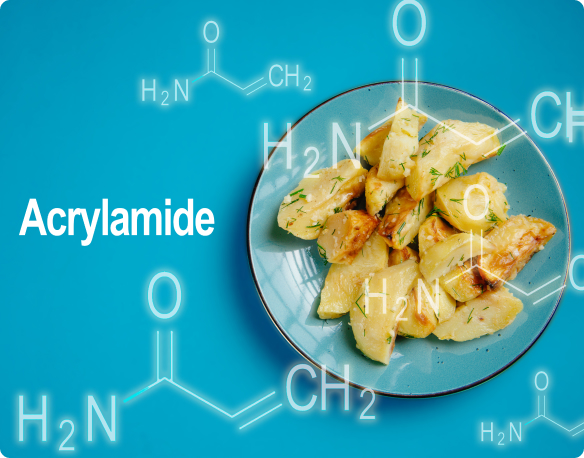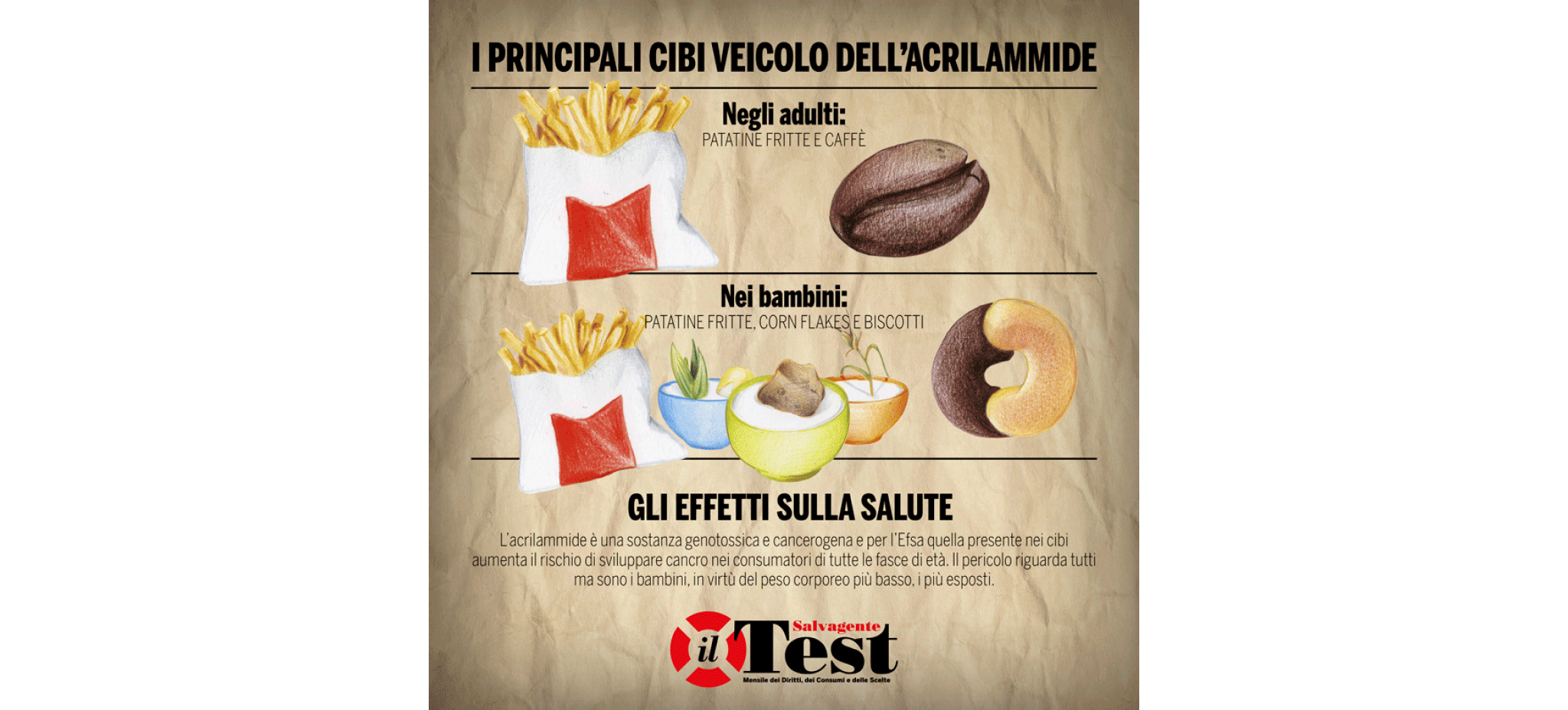
Acrylamide: a chemical hazard that should not be underestimated
Acrylamide (Fig. 1), also known as propenamide, is an amide of acrylic acid formed in various industrial processes.
It is one of the components of cigarettes and can be released during the high-heating of starchy foods (e.g. potatoes, cookies, bread, etc.), but also during the roasting of cereals and coffee (Fig. 2).
The term “high-temperature cooking” refers specifically to cooking at temperatures above 120 °C: frying, grilling, baking, and industrial transformations.
The acrylamide problem mainly affects foods intended for sale and catering. However, EFSA (European Food Safety Agency) recommends paying attention to household cooking as well.

Fig.2 – Foods that may contain acrylamide. [Source: ilsavagente.it]
Expert opinion
The International Agency for Research on Cancer (IARC) has classified acrylamide as “probably carcinogenic to humans” and reminded people that despite the low risk, it is important to limit its consumption.
A 2005 statement said the molecule could pose a health problem because it is a substance known to be carcinogenic and genotoxic, meaning it can damage cells.
For this reason, it is recommended that large producers (e.g., roasted grains) constantly monitor cooking temperatures to limit their development.
However, it is not clear what happens during the roasting of coffee, which, incidentally, is not consumed directly, but in the form of an infusion with much lower concentrations.
How it is absorbed by the body
After ingestion, acrylamide is absorbed by the walls of the intestine and adjacent organs in the form of glycidamide.
It is this molecular form that would have a harmful effect on cells.
Coffee with light roast (less roasted) contains more acrylamide than coffee with medium or dark roast (long roasted). It also appears that hot air fryers induce acrylamide production of more than 30-40% compared to classic oil fryers.
Some data
Fried potato dough products (including chips and snacks) typically contain 20% less acrylamide (338 μg/kg) than those made from fresh potatoes (392 μg/kg).
Furthermore, potatoes grown in soils poor in sulfur accumulate less asparagine, favoring a lower formation of the molecule during cooking.
Coffee with light roast (less roasted) contains more acrylamide than coffee with medium or dark roast (long roasted). It also appears that hot air fryers induce acrylamide production of more than 30-40% compared to classic oil fryers.
Home tips
Storing potatoes at less than 8°C usually increases the accumulation of sugars in the tissues, which can lead to the formation of more acrylamide (> 14%).
Consumer preference for crispy and brown fries and other fried potato products may increase average dietary exposure by 64% (as much as 80% for heavy consumers).
If bread (Fig. 3) is toasted for five minutes instead of three, the acrylamide content can increase from 31μg/kg to as much as 118μg/kg, depending on the type of bread and the temperature of the toaster. However, consumption of well-toasted bread increases the average total dietary exposure by only 2.4%.

Colorimetric table that indicates when it is good not to consume the food because it is at risk of containing acrylamide (eg the toast below should not be consumed). [Source: Acrilammide Livello – Bing images]
Can the industry help?
A group representing the European food industry (Food Drink Europe, which is also a member of EFSA’s Stakeholder Consultative Platform) has worked closely with national authorities and the European Commission to develop a set of guidelines (toolbox) describing how to reduce acrylamide levels in processed foods.
Brief excerpts from these guidelines have been compiled into sector-specific brochures to help food companies implement the elements of these guidelines that are relevant to their particular sector. These brochures are available in 24 European languages.
Sources: